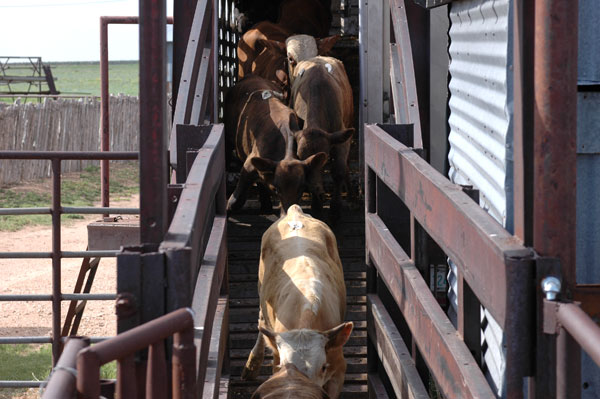Why you need to be selling to buyer experience when marketing calves
Looking to make more on those calves? There are a lot of factors in play, but catering to buyer's past experience may be your best card.
September 6, 2018

Reasons why two buyers are willing to pay more or less for the same set of calves are more plentiful than excuses for an open gate.
They range from known attributes like size and condition, to the perceived potential of breed type and management, to the economic practicality of completing a load. Never mind current market conditions, basis and all of the rest.
Willingness to pay has plenty to do with a buyer’s previous experience, of course.
Consider average daily gain (ADG) and a recently published study (Producer Decision Making Under Uncertainty) from Glynn Tonsor, Kansas State University agricultural economist. It helps confirm and quantify what intuition and general observation suggest.
In collaboration with BEEF, Tonsor sent a survey to stocker producers asking them the best, average and worst ADG experiences they had in the last 10 years. Those are considered reference points, which may affect future feeder cattle buying decisions.
Participants were then asked which of three lots they would buy, if any, for a stocker-backgrounding operation placing steers calves at 500 pounds, with the intent of selling 120 days later. Cattle were offered at one of three price levels, with each lot varying in ADG.
Unsurprisingly, producer willingness to pay for feeder cattle increased with expectation of higher ADG.
Less obvious, Tonsor explains, is that “producers will discount poor-performing cattle more than they will pay premiums for higher-performing cattle. Economists refer to this as loss aversion; a loss is more painful than a gain is valuable.”
For instance, compared to a baseline lot of calves with an ADG of 2.0 pounds in the study, the discount on cattle with an ADG of 1.8 pounds was larger than the premium for cattle with an ADG of 2.2 pounds, despite the difference being 0.2 pounds in both cases.
“Alternatively, if buyers view all available cattle superior to their experience — they have no previous experience with that level of performance — then a premium may not be paid.” Huh?
One explanation could be that since all calves offered are superior to past experience, there’s no recognized benefit to pay more.
Another possible reason, Tonsor says, is that “I have to experience high-performing cattle before I am willing to believe it is possible or likely, and therefore worth a premium.”
Whatever the reason, the study suggests retrieving additional revenue for adding value in the form of increased performance, differentiated management and the like, has plenty to do with presenting cattle to buyers who have previous experience — a reference point — from which to value the cattle.
That helps explain divergent prices for similar cattle in different markets. It also underscores why performance information on previous calf crops out of the same genetics and under the same management has value to buyers. There’s no telling how they will gauge the performance relative to their experience, but it’s another piece of the puzzle that should reduce purchase risk.
Moreover, it explains some of the market evolution toward specialized sales and further documentation — such as for preconditioning — as well as the growth of some livestock markets versus others.
“The implications for a producer seeking to sell faster-growing animals, for instance, or to make corresponding genetic and operation investments are clear,” Tonsor says. “The interested seller’s ability to obtain a higher price will depend not only on realized cattle quality enhancement, but ultimately on the experience of other producers expressing interest in buying the cattle.”
Consequently, Tonsor says it’s easy to understand the value of newer market outlets, such as video auctions, where higher-performing cattle can find more potential buyers with high-performance experience, and perhaps more willingness to reward it.
About the Author(s)
You May Also Like




.png?width=300&auto=webp&quality=80&disable=upscale)
